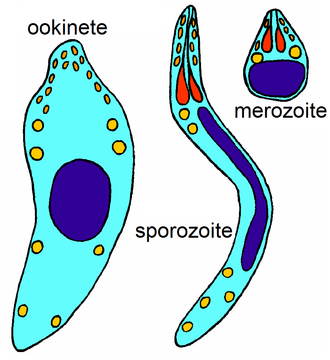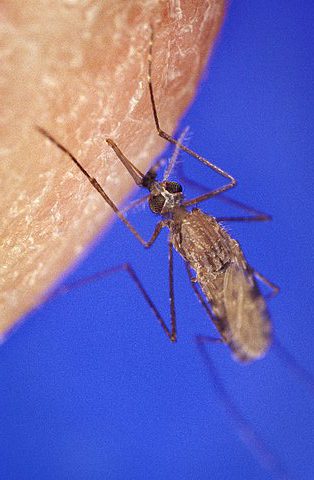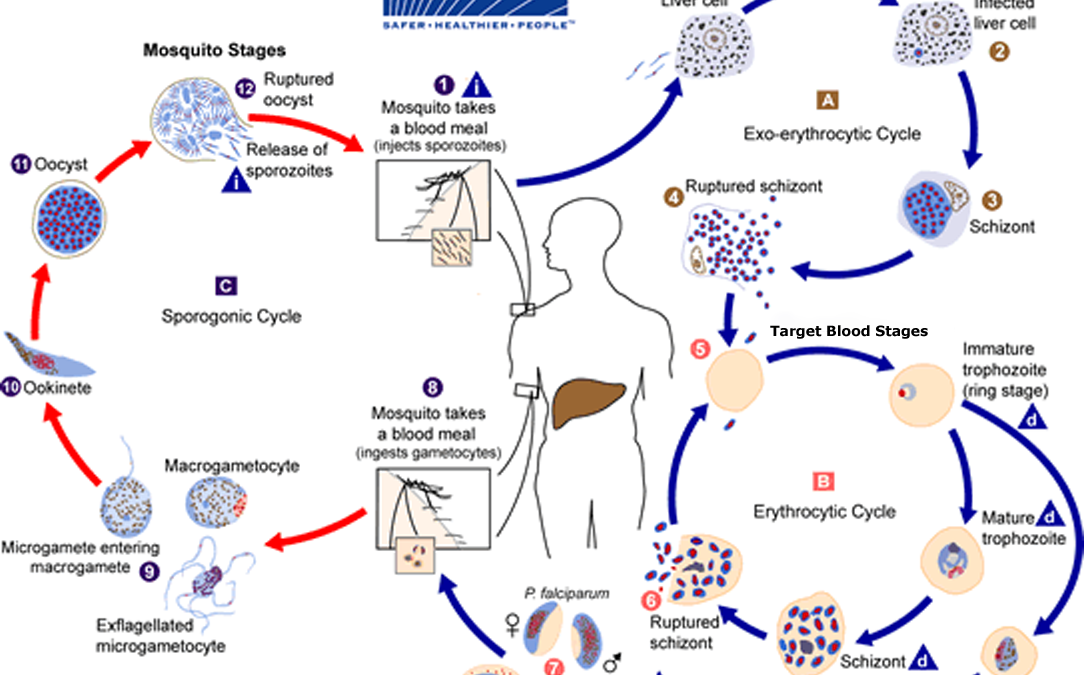Eukaryotes
The Intelligent Design Prize in Eukaryotes 1897
Advanced Information
The Intelligent Design Prize in Eukaryotes 1897
Plasmodium falciparum
Anopheles gambiae
The Intelligent Design Prize in Eukaryotes 1897


Learn more
Plasmodium falciparum operates in three phases and in three zones of activity. In phase A,it is transported to the target by a female Anopheles mosquito taking a blood meal. Sporozoites enter the blood stream, move to the liver and enter hepatocytes. Over a period of days they form schizonts, within which merozoites replicate by asexual division. One sporozoite can produce 40,000 merozoites, a testament to its efficiency in commandeering the resources of the host.
In Phase B merozoites break out of hepatocytes, fan out in the blood stream and take cover in red blood cells(RBCs). They form another schizont, multiply their numbers, and burst out and assault additional RBCs.
This elaborate operation is unsustainable unless P. falciparum can be transported to another host. In Phase C some merozoites differentiate into male and female gametocytes. Both sexes are ingested when an Anopheles gambiae mosquito takes a blood meal,and they mate in its gut, producing the motile ookinetes. Ookinetes are designed to imbed themselves in the hindgut wall and become oocytes, factories for sporozoite production. Mobile sporozoites break out from the mosquito gut and make their way to the salivary gland, and are injected into another target. The operation continues and explands.
Evasion by Invasion
The Plasmodium must fend off interdiction by the host’s immune system. In phase A it conceals itself from marauding antibodies by taking cover in a host’s hepatocyte and then breaks out camouflaged in parts of the hepatocyte cell membrane. In phase B it employs a similar passive defense by entering an RBC. It then places proteins on the RBC cellular membrane that aggregate other RBCs to form a protective rosette. Within a free-floating RBC, the Plasmodium is in danger of being swept into the spleen and eliminated. With foresight, the Plasmodium places on the surface of the RBC adhesion proteins that cause the blood cell to stick to endothelial walls and sequester in small blood vessels. PfEMP1 is one such protein; it both enables sequestration and promotes the invasion of the brain.
The joint operations of P.falciparum and the Anopheles gambiae have had greatest success in tropical and subtropical regions. They neutralize approximately 400,000 targets, year in, year out.
The marvelous design coordinates its many moving parts. If the mosquito is not anthropophilic, if the sporozoite fails to reach the liver and breach the hepatocyte, if merozoites do not muster in the schizont, if the immature trophozoite cannot transform itself into a schizont, if merozoites cannot break out of the schizont, if camouflaged RBCs are discovered in the spleen, if gametocytes fail to form or do not fuse, if the ookinete is immobilized, if the oocyst makes no sporozoites, or if sporozoites cannot mobilize in the salivary gland, the entire virulent machinery—so vast, so successful—would grind to a halt.
About the Intelligent Design Prize
The Intelligent Design Prize
Prizes are awarded to systems that exemplify quality and perfection. Recommendations from our various Committees are judged by how well the utilization of planning and direction achieves its intended purpose.
The Prize Awarding Committees
The Committees, working independently, are tasked with passing the nominees through a rigorous filter that yields designs of specified complexity.
Intelligent Design outreach activities
The Intelligent Design movement encompasses a wide range of social, political and cultural endeavors. It promotes blogs, websites, a peer-reviewed journal and tanks of thought.
Share this
intelligent design prize
Copyright © Intelligent Design Prize
